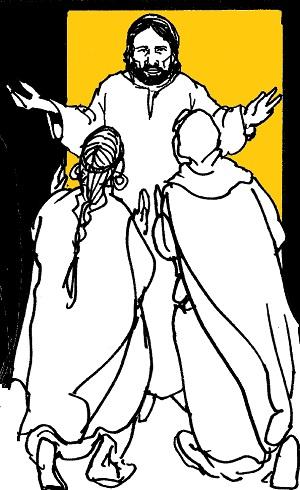

“The Kingdom of heaven may be likened to a king who gave a wedding feast for his son” (Matt 22:1).
The Parable of the Wedding Feast, recorded in Matthew’s Gospel after the destruction of Jerusalem in 70 CE, interprets that tragedy as the result of the failure of the Temple leadership to acknowledge Jesus as the messianic bridegroom. Those invited to the wedding did not come, so the invitation was extended to outsiders, the gentile nations at the margins of the original promise. Matthew makes a point of expanding those brought into the banquet hall.
The biblical image of a wedding feast makes clear that what God wants for us is a love story. The union of divinity and humanity is revealed fully in the Person of Jesus, but it is meant to extend to all of us by our incorporation into Christ through baptism. We are united to God in Christ. When God sees us, God sees his beloved Son.
Human failure to understand or respond to God’s invitation has always been part of the story of salvation. It is a love story marked by broken hearts and second chances, exile and return, sin and redemption. The wedding is on, even if it takes us a lifetime to grasp the meaning of the gift God is offering us in Jesus. He is the bridegroom who lays down his life for his beloved. We say yes to God’s love each time we love one another, for there can be no wedding without guests. Come to the wedding today and bring a friend. Or even better, bring someone who does not know God or who has been estranged from God. Let the wedding hall be filled. This is surely the Gospel message of Jesus.
Unlike the shorter parables in Chapter 13, Matthew saves some of his longer story parables for late in his Gospel. They likely reflect using Jesus’ themes to apply to the needs of his church at a time when membership in the faith community required baptism and some early form of orthodox anointing.
So, at the end of today’s parable, a man without a wedding garment is thrown out of the wedding. Later, in Matthew 25: 1-13, five bridesmaids are excluded from the wedding for not having extra oil for their lamps. These stories add conditions to Jesus’ unconditional mercy to help define membership requirements for new Jewish and gentile converts as the church grew. St. Paul also writes of false teachers who needed to be opposed, and John’s Letters exclude members who did not reflect the faith of the orthodox community. Decisions are being made for those gathered into the wedding from the highways and byways that appear to diminish Jesus’ scandalous openness to sinners and the outcast.
This shift adds an important layer to the history of the early church as it organizes itself. This exclusiveness shows how difficult the original call of Jesus was and diminishes the radical joy James Joyce captured in his famous description of the Catholic church: “Here comes everyone!”
Advertisement







